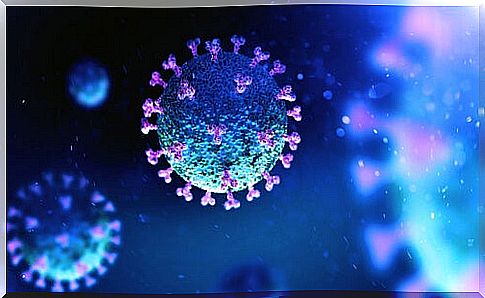Coronavirus: Why Are There Patients Who Are Cured And The Elderly Not So Much?
The coronavirus that produces the current outbreak of infections around the world generates asymptomatic cases, patients who are cured, and others who suffer severe forms of the disease. Among severe cases, the group that suffers the most are the elderly.
Most of the deaths from COVID-19 have occurred in those over 65 years of age, with underlying diseases, and after going through a severe respiratory clinical picture. These patients are usually admitted to intensive care units, sometimes requiring the use of an artificial respirator.
These respirators are machines used to replace lost respiratory function. The damage that SARS-CoV-2 causes to the lung tissue makes it inefficient for gas exchange, and that is why an external support is needed to try to survive.
Now, researchers wonder why the coronavirus has patients who are cured and others who become seriously ill. In turn, the other important question is why seriously ill patients tend to be older adults.
Answers to these questions streamline the effectiveness of prevention measures and improve treatment protocols. If we understand how SARS-CoV-2 infects, we are closer to containing it.
The coronavirus figures among the elderly
The short global experience with the coronavirus suggests that age is a major risk factor for severe COVID-19 attack. So far, almost 95% of deaths have occurred in people over the age of 65.
The older the infected person is, the worse their prognosis. Among those under 60 years of age, the lethality of the coronavirus is less than 1%. This means that in this age group 1 person dies for every 100 who are infected.
But if we focus on older people, the fatality increases. Already among those over 70 years it is around 5%, meaning that 5 out of every 100 infected die. And in those over 80 the rate can reach 15%, according to studies that have already been systematized.
This characteristic explains why in countries like Italy and Spain the mortality associated with the coronavirus is so high. The virus has settled, to a large extent, in the groups of older adults in these regions, increasing the fatality rate at the expense of the elderly.

The coronavirus enters the elderly easier
Investigations with SARS-CoV-2 to find out how it enters cells have determined that the access key is a protein. Spicules of the virus coat bind to pulmonary ACE receptors.
The ACE receptor is found in different organs, but has a marked presence in the alveoli of the lung. It turns out that this protein is more present, for example, in people with cardiovascular conditions. And it also turns out that heart problems are more frequent in those over 60 years of age.
In this way, the risk group is explained, in part, by how easy it is for the coronavirus to enter the lung. The greater the presence of the pulmonary ACE receptor in an elderly and cardiac person, the greater the multiplication of the virus.
Once inside the body, and having triggered all the inflammatory reactions, it is also true that the patient with cardiovascular disease has fewer elements to respond to the attack. Similarly, if your body begins to fail, the more difficult it becomes to stabilize you in an intensive care unit.
Patients who are cured of coronavirus have good immune systems
The vitality of the person’s immune system is essential against any infection. COVID-19 is no exception. Patients who are cured of coronavirus usually have a commensurate immune response.
On the contrary, as we age our immunity weakens as well. This is a natural process over the years. Responsiveness decreases, it is slower, and therefore less efficient.
Leaving SARS-CoV-2 aside, we can mention seasonal flu as another virus to which the same model applies. Every year in winter, those who have the worst chances of surviving a flu-like illness are the elderly.
Among patients who have experienced severe clinical forms of COVID-19, a high presence of IL-6 has been detected. This is a cytokine, that is, a substance that promotes tissue inflammation. When its presence is exacerbated, the so-called cytokine storm is provoked, which could explain the respiratory complications of the coronavirus that ends in death.

So why are there patients who are cured of coronavirus and others not?
Like any infection, lethality is understood as the combination of the virulence of the attacking agent and the defensive state of the host. With the coronavirus, it is not the exception, and for this reason there are patients who are cured, while others, in general the elderly, do not.
Knowing that those over 65 are those who are at risk of death, we must take care of them. They must maintain social isolation and, in this way, it will be the youngest who take care of their purchases and their needs while the pandemic lasts.









